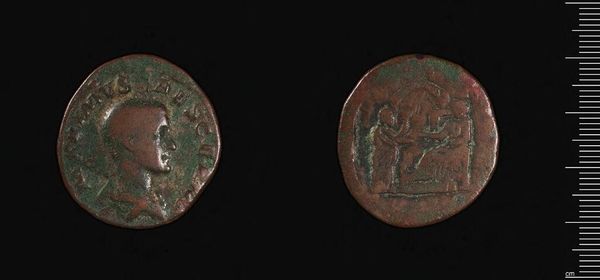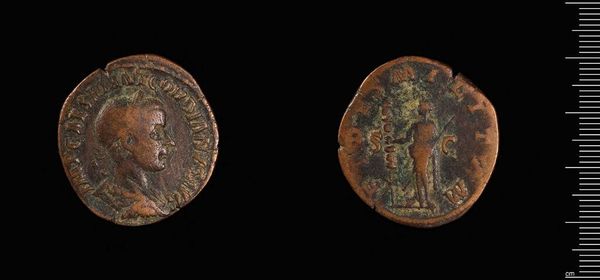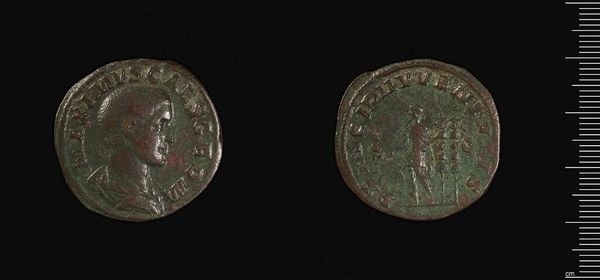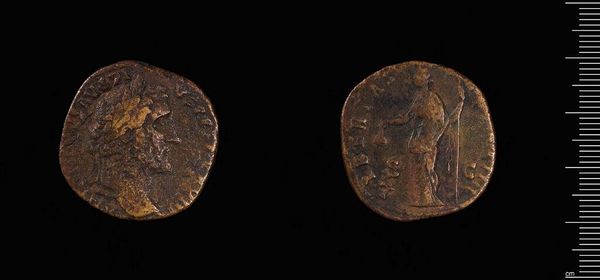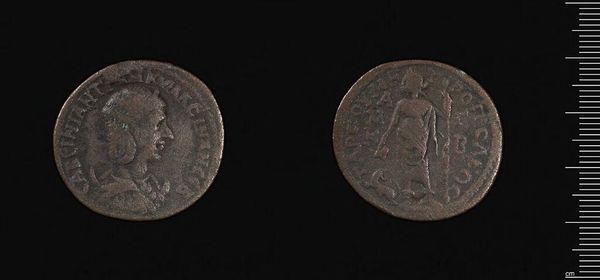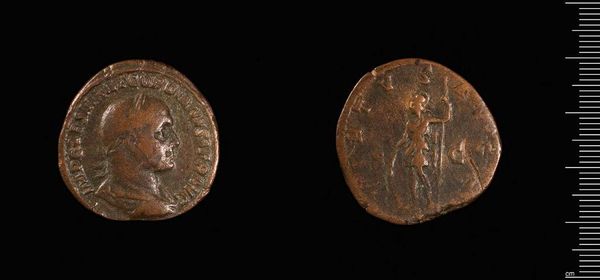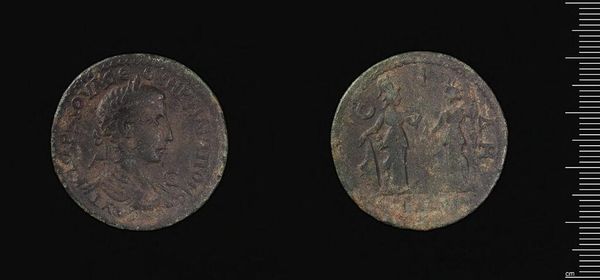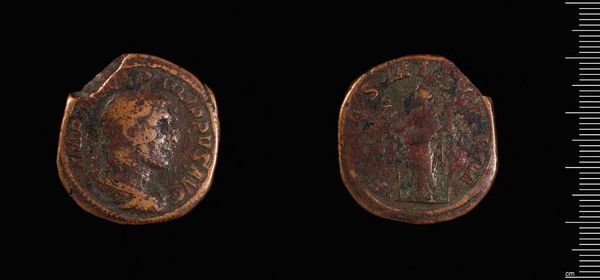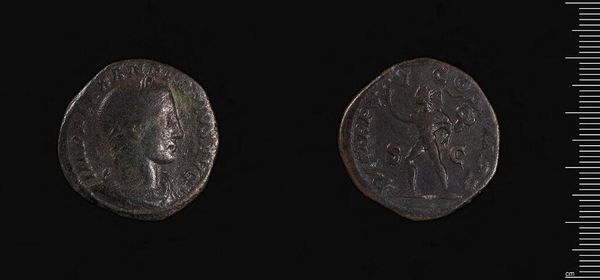
Dimensions: 23.58 g
Copyright: CC0 1.0
Curator: Here we have a Sestertius of Antoninus Pius, a Roman coin from his reign, now residing in the Harvard Art Museums. Editor: Immediately, the wear and patination evoke a sense of temporal distance. It's a powerful reminder of the endurance of empire, but also its decay. Curator: Indeed. One side presents a profile of Antoninus Pius himself, his features rendered with the imperial gravitas we expect. The reverse depicts a standing figure, likely a personification of a virtue or deity associated with his rule. Editor: These images were meticulously circulated as instruments of power—projecting a specific narrative about the emperor's character and reign. What was the sociopolitical context of its minting? Curator: He sought to portray himself as a restorer, a bringer of peace and prosperity. The coin becomes a potent symbol of that ideal, almost a charm for stability. Editor: Charms can be manipulative. A coin can also stand for the economic and social structures that upheld these power dynamics, often unjustly. Curator: A fair point. It’s a reminder that even the smallest object can carry immense historical weight and conflicting interpretations. Editor: Precisely. It underscores the importance of critically examining the narratives embedded in such seemingly innocuous objects.
Comments
No comments
Be the first to comment and join the conversation on the ultimate creative platform.


